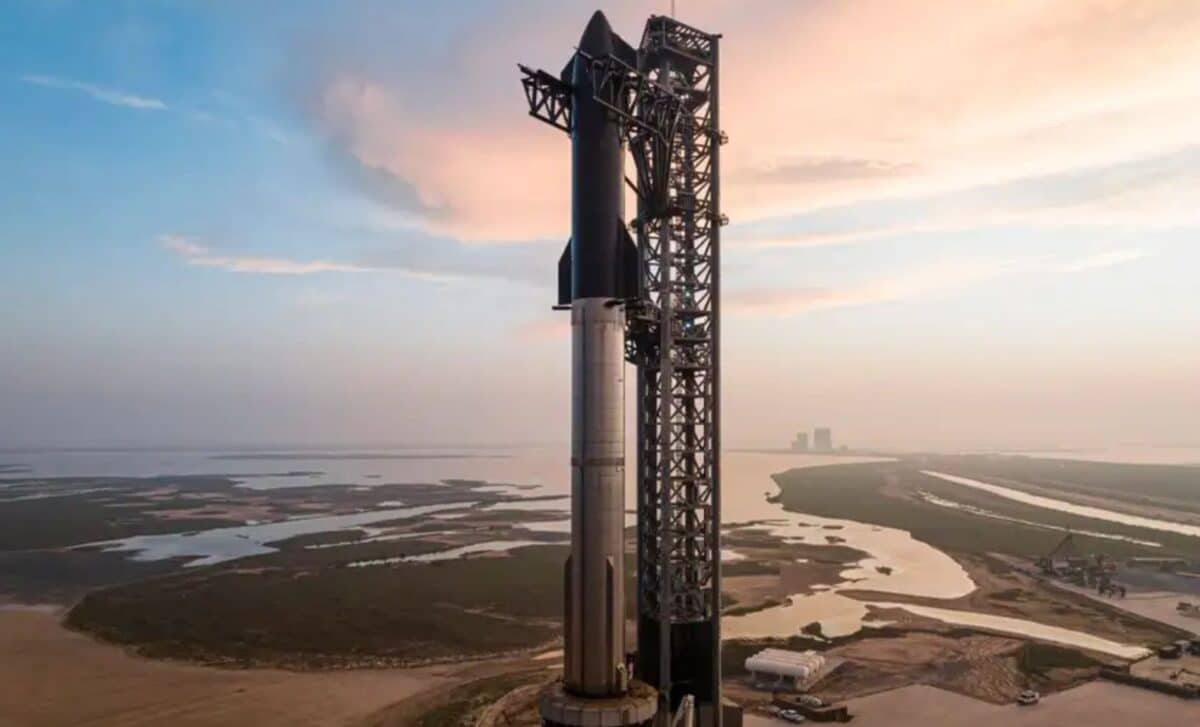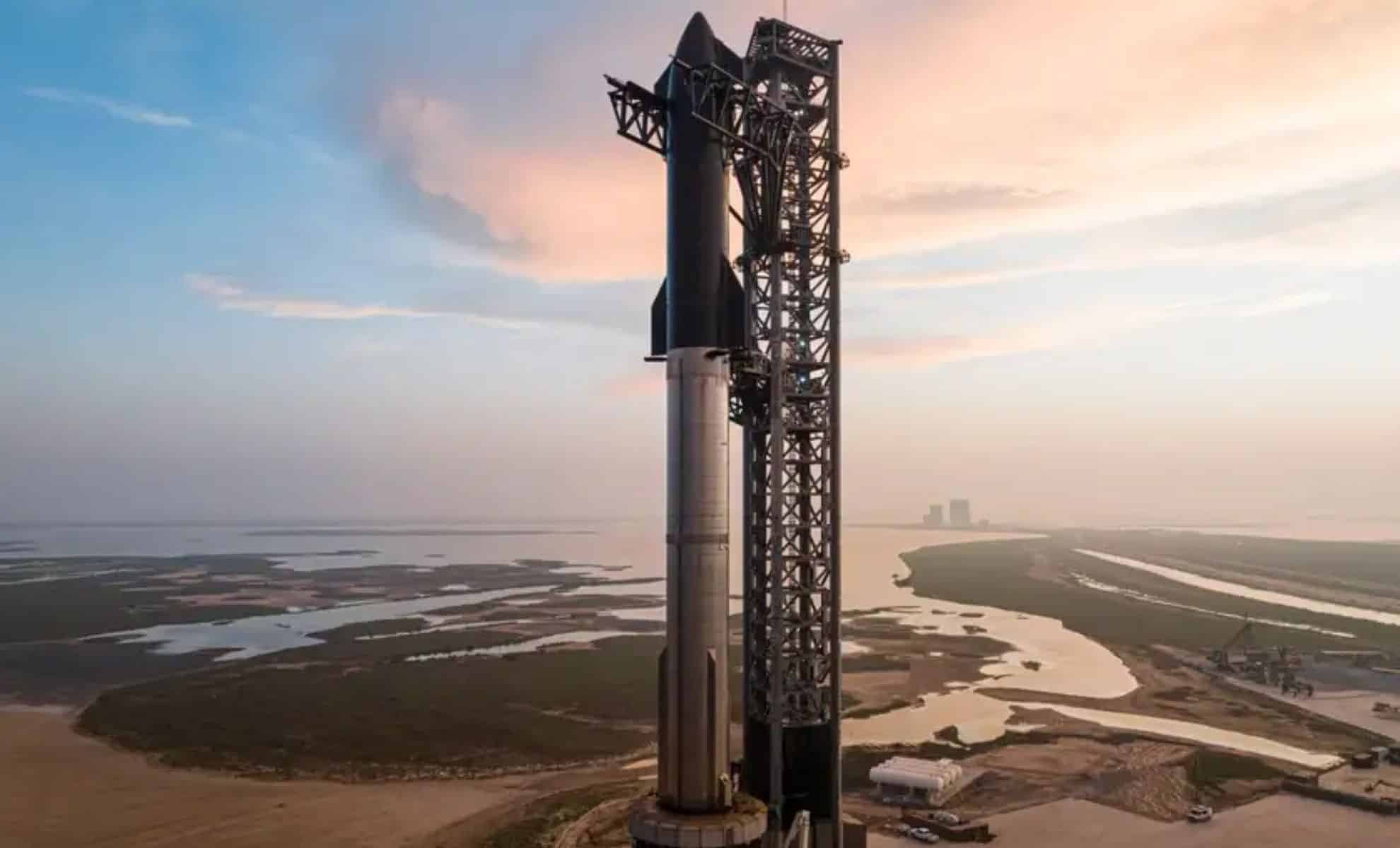NASA is eagerly anticipating SpaceX’s upcoming fifth test flight of Starship, which could take place as soon as October 13, pending FAA approval. The flight is crucial to the development of Starship’s Human Landing System, which will carry astronauts to the Moon as part of NASA’s Artemis 3 mission. This test will also mark a significant step toward making Starship fully reusable, with SpaceX attempting a complex booster recovery maneuver at its Starbase facility in Texas.
NASA Eagerly Awaits SpaceX’s Starship Test Flight, Key to Lunar Missions

NASA is looking forward to SpaceX’s fifth Starship test flight, which could take place as early as October 13, 2024, depending on regulatory approval. The flight is a critical step toward SpaceX’s role in NASA’s Artemis program, especially for the Human Landing System (HLS), which will enable lunar landings.
A Closer Look at the Mission
This upcoming flight will test not only the Starship upper stage but also the Super Heavy booster, which will attempt an ambitious new landing procedure. While previous tests have seen the booster splash down in the Gulf of Mexico, this time, SpaceX plans for the booster to return to its Starbase launch site in Texas, where a pair of mechanical arms — part of a tower dubbed “Mechazilla” — will attempt to catch it mid-air. This move is a key part of SpaceX’s long-term plan to make Starship fully reusable.
Bill Gerstenmaier, SpaceX’s vice president for build and flight reliability, expressed optimism about the maneuver, noting that the company has already achieved impressive landing accuracy in previous tests. “We landed with half a centimeter accuracy in the ocean,” Gerstenmaier said, indicating confidence that they might succeed in catching the booster with the launch tower. However, SpaceX has emphasized that thousands of system criteria must be met for the catch to proceed, and if conditions aren’t right, the booster may still splash down in the ocean as a backup.
NASA’s Interest in Starship and Artemis
NASA’s enthusiasm for the test flight stems from Starship’s pivotal role in its Artemis missions, particularly Artemis 3, which aims to return astronauts to the lunar surface for the first time in decades. A specialized version of Starship will serve as the lunar lander, known as the Human Landing System (HLS). This makes the success of the Starship program essential for NASA’s broader goals of sustainable lunar exploration and, eventually, crewed missions to Mars.
The upcoming test is part of a larger strategy to ensure that SpaceX can meet the demands of these lunar missions. One of the key challenges ahead is demonstrating the capability for propellant transfer in space, a complex procedure that will be vital for refueling the Starship lunar lander in orbit before it embarks on its journey to the Moon. SpaceX plans to create a propellant depot in Earth’s orbit, supplied by multiple Starship launches, to fuel the lunar lander. "We’ve got to be able to demonstrate that they can do that effectively and that they understand any nuances associated with that," Glaze explained, referring to the upcoming propellant transfer demonstration.
NASA is closely monitoring these developments, recognizing that SpaceX’s progress will significantly impact the timeline for future Artemis missions. Successful propellant transfers, along with the booster recovery, will be essential steps in preparing Starship for its role in the Artemis 3 mission.
Regulatory Hurdles and FAA Approval
Although SpaceX announced that they were targeting an October 13 launch date, regulatory approval from the Federal Aviation Administration (FAA) remains a potential roadblock. Earlier reports indicated that the FAA might not be able to issue a launch license until November due to concerns about the environmental impact of the mission’s changes.
Starship’s fifth flight test is preparing to launch as soon as October 13, pending regulatory approval → https://t.co/hibmw2lVv1 pic.twitter.com/Suw1kKLHiE
— SpaceX (@SpaceX) October 7, 2024
However, recent updates suggest that the regulatory review process has been moving faster than anticipated. The FAA’s approval is contingent on its ongoing review of the environmental effects of the updated flight profile, which now covers a larger area than previously examined. SpaceX provided the necessary information in mid-August, and the FAA will make a final decision once all licensing requirements have been met.
An FAA official mentioned that the agency is reviewing the new data, and while no fixed date for approval has been confirmed, there is optimism that the licensing process could be completed in time to support an October 13 launch. Should there be any delays, SpaceX is prepared to adapt, but the company and NASA are eager for the flight to proceed as soon as possible.
What’s Next for Starship?
The fifth test flight is a crucial step for SpaceX as it continues refining Starship’s capabilities. Beyond the technical milestones, NASA and SpaceX are focused on the rate of Starship launches needed to support the propellant depot strategy. Bill Gerstenmaier indicated that the company expects to conduct 16 propellant transfers for a single lunar mission, a challenging but achievable goal.
NASA and industry observers are closely watching SpaceX’s progress, recognizing that this unorthodox approach to space exploration could redefine how the U.S. tackles long-term goals like lunar bases and missions to Mars. “We’ve all been watching SpaceX. They work a little differently from traditional industry,” Glaze noted, underscoring the unique pace and style of SpaceX’s development.
As SpaceX ramps up production with the construction of a second launch tower at Starbase and explores launch possibilities from Florida, the coming months will be critical for testing and refining the Starship system. Both NASA and SpaceX are optimistic that these next tests will pave the way for Starship’s role in human space exploration, ushering in a new era of reusable spacecraft capable of deep space missions.



